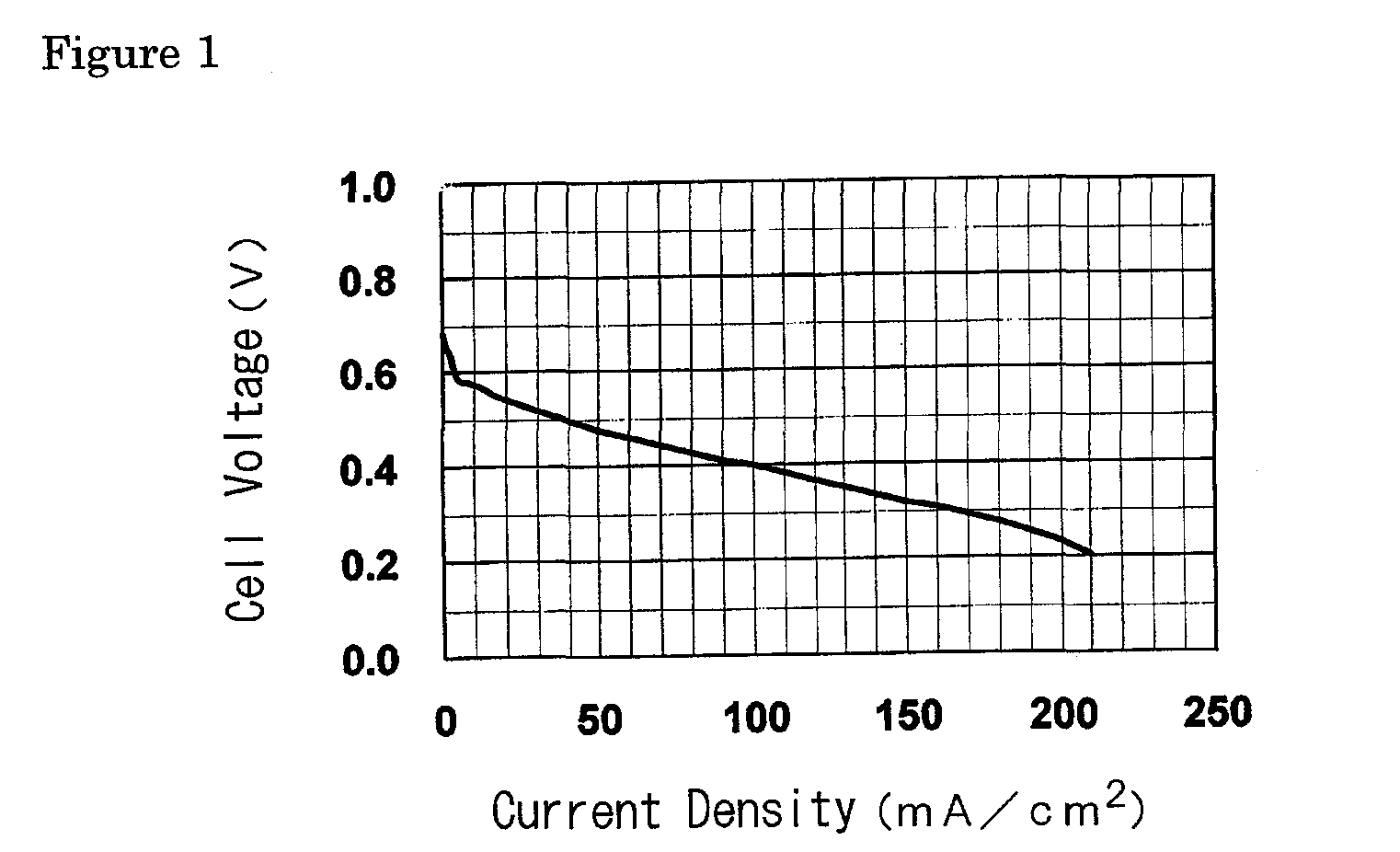Polyelectrolyte film, film-electrode assembly, and solid-polymer-type fuel cell
- Summary
- Abstract
- Description
- Claims
- Application Information
AI Technical Summary
Benefits of technology
Problems solved by technology
Method used
Image
Examples
examples
[0136]The present invention is further specifically described below through referential examples, examples and comparative examples, and performance tests as an electrolyte membrane for polymer electrolyte fuel cells (ion exchange capacity, membrane strength, ion conductivity of the membrane, electric resistance of the membrane, methanol permeation rate of the membrane, power generation performance of single cells for fuel cells) and results of the tests, but the invention is not limited thereto.
embodiment 1
Alkyl Substitution)
Referential Example 1-1
Production of a Block Copolymer Composed of Poly(p-Methylstyrene) (Polymer Block (A)) and Hydrogenated Polybutadiene (Polymer Block (B))
[0137]In a similar process to a previously reported process (JP-A-2005-281373), a poly(p-methylstyrene)-b-polybutadiene-b-poly(p-methylstyrene) (hereinafter abbreviated as pmSBpmS) was synthesized using, in synthesis of polymer block (A), p-methylstyrene as an aromatic vinyl compound and using, in synthesis of polymer block (B), butadiene. The number average molecular weight of the resulting pmSBpmS was 78,000, and, in the pmSBpmS, the amount of the 1,4-bond and the content of the p-methylstyrene unit determined by 1H-NMR measurement were 58.5% by mol and 30% by mass, respectively.
[0138]A solution of the synthesized pmSBpmS in cyclohexane was prepared, the solution was put in a pressure proof vessel whose inside atmosphere had sufficiently been replaced with nitrogen, and then, hydrogenation reaction was con...
referential example 1-2
Production of a Block Copolymer Composed of Poly(Styrene / 4-Tert-Butylstyrene) (Polymer Block (A)) and Hydrogenated Polyisoprene (Polymer Block (B))
[0139]In a similar process to a previously reported process (JP-A-2005-281373), a poly(styrene / 4-tert-butylstyrene)-b-polyisoprene-b-poly(styrene / 4-tert-butylstyrene) (hereinafter abbreviated as (S / tBS)I(S / tBS)) was synthesized using, in synthesis of polymer block (A), a mixture of 4-tert-butylstyrene and styrene in a mass ratio of 50 / 50 as aromatic vinyl compounds and using, in synthesis of polymer block (B), isoprene. The number average molecular weight of the resulting (S / tBS)I(S / tBS) was 51,800, and, in the (S / tBS)I(S / tBS), the amount of the 1,4-bond, the content of the styrene unit and the content of the 4-tert-butylstyrene unit determined by the 1H-NMR measurement were 94.0% by mol, 15.6% by mass and 15.6% by mass, respectively. The procedure of Referential example 1-1 was repeated except that the synthesized (S / tBS)I(S / tBS) was use...
PUM
| Property | Measurement | Unit |
|---|---|---|
| Equivalent per mass | aaaaa | aaaaa |
| Fraction | aaaaa | aaaaa |
| Fraction | aaaaa | aaaaa |
Abstract
Description
Claims
Application Information
 Login to View More
Login to View More - R&D
- Intellectual Property
- Life Sciences
- Materials
- Tech Scout
- Unparalleled Data Quality
- Higher Quality Content
- 60% Fewer Hallucinations
Browse by: Latest US Patents, China's latest patents, Technical Efficacy Thesaurus, Application Domain, Technology Topic, Popular Technical Reports.
© 2025 PatSnap. All rights reserved.Legal|Privacy policy|Modern Slavery Act Transparency Statement|Sitemap|About US| Contact US: help@patsnap.com



